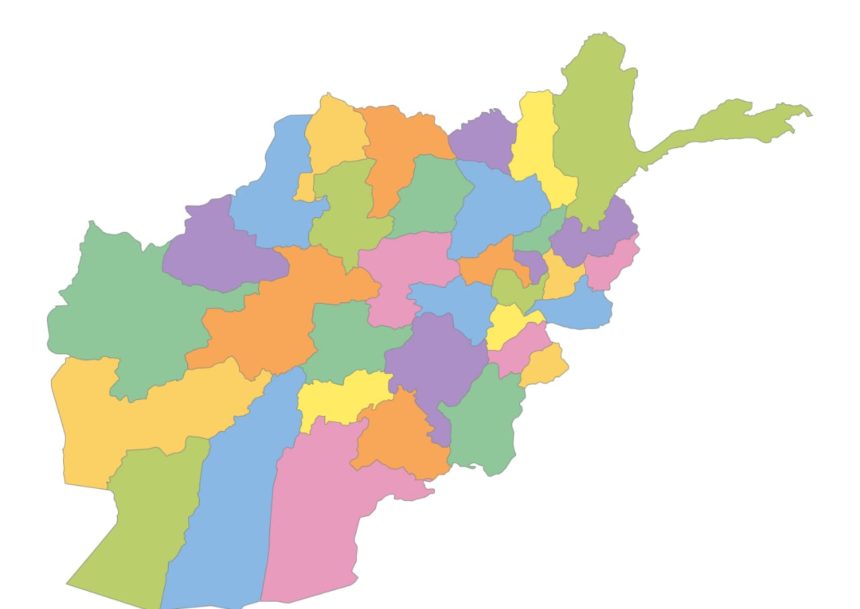The Afghan or Pashtun people, hailing from tribes dwelling in the slopes of the Sulaiman Mountains, progressively entered the region of Khorasan. Evolving over time, influenced by regional shifts and neighboring conflicts, this ethnic group first ascended to power and governance in Kandahar in 1747. Ancient Aryana or Greater Khorasan, modern-day Afghanistan, stood as a pivotal hub of human civilization, with its inhabitant’s millennia ago excelling in diverse sciences — encompassing astronomy, medicine, mathematics, trade, agriculture, and more — thus laying the indispensable foundations for human civilization on Earth. Approximately three thousand years ago, Aryana boasted thriving and populous cities, acting as a crossroads connecting major civilizations like Greece, China, India, and Mesopotamia. The emergence of Zoroastrianism, founded by its preacher in the current Balkh, the capital of Aryana, dates back several centuries before the birth of Christ.
While the name Afghanistan has been thrust upon this nation in recent centuries due to the demands of Afghan/Pashtun rulers and negotiations with the British, the historical roots of this land and its original inhabitants Persian or Tajiks extend back thousands of years. Afghans, or Aoghans, a nomadic tribe around the Sulaiman Mountains, adopting a mountainous lifestyle, gradually traversed into Khorasan/Afghanistan in the 17th century. As emphasized by Sharif Idrisi, a distinguished Spanish and Muslim geographer and historian, the social, cultural, and historical presence of Afghans among the numerous tribes and clans in Greater Khorasan was subtly conspicuous. The term “Afghan” initially denoted small tribal people leading a mountainous life around the Sulaiman Mountains, west of Hind (present-day Pakistan). In this region, they functioned as bandits and soldiers, serving as mercenaries employed by Khorasan’s kings; one such king, Timur Lang, regarded Afghans as a nuisance, leading to their massacre.
These mountainous tribes, shaped by social events among neighbors and the conclusion of Nadir Afshar’s rule, seized power in 1747 in the geography of Khorasan or present-day Afghanistan. From the era of Ahmad Shah Abdali onward, they styled themselves as Amirs and Kings of Khorasan in treaties, regarding all of them as rulers of Khorasan. When Fath Ali Shah Qajar inked the initial treaty with the British, Khorasan was mentioned as a neighboring country to Iran. While the term Afghanistan is used to signify the country or land of Afghanistan, the word “Afghan” specifically denotes the Pashtun people. Afghan nationalists, or Pashtun nationalists, seek to forcibly impose this name on all residents of this country, including Tajiks, Uzbeks, Hazaras, and others, striving to unify all the people of Afghanistan, irrespective of their diverse identities and ethnicities. This endeavor is unjustified within the context of the rich civilization of Greater Khorasan and does not represent the various identities and ethnicities residing in this geography. All inhabitants of this region are not Afghans or Aoghans; the term “Afghan” or “Aoghan” precisely refers to Pashtuns residing along the borders of Greater Khorasan and parts of present-day Afghanistan.
Afghans/Aoghans, historically a small segment of recently returned tribes in the land of Khorasan, were previously the heart of powerful empires such as the Ghaznavids and Ghurids before the advent of the Afghan rulers. However, the term “Afghan” was politically manipulated after the 19th century, influenced by superiority-driven ideologies and fascist attitudes, commencing with Amanullah Khan, who altered the name of Khorasan to Afghanistan in 1923 in the Constitution of Afghanistan (Principles of the Constitution of the Afghanistan Government). In the realm of Afghanistan’s demographic composition and the diverse ethnic groups inhabiting the country, foreign non-governmental organizations present statistics revealing that Pashtuns constitute a mere 33% of the population in this geographic expanse. Out of this demographic, a mere 12% reside in urban centers, with a notable segment currently embracing a nomadic lifestyle. The residual 67% of the nation’s populace comprises non-Pashtuns, 47 of which are Tajiks.
In the contemporary annals of Afghanistan’s history, the political and cultural subjugation wielded by Afghan or Pashtun rulers constitutes an integral facet of the governing paradigm initiated post-Ahmad Shah Abdali towards the denizens of Khorasan and the cultural tapestry of this region. This era is characterized by deliberate and calculated endeavors to establish linguistic hegemony and impose the tribal identity of Afghans upon other constituents of the nation. Commencing with Amanullah Khan, who spearheaded the renaming of Khorasan to Afghanistan, and the cultural autocracy of the duplicitous monarch of Afghanistan (Nader shah), an overt and novel manifestation has crystallized, as he ardently sanctioned the policy of enforcing Pashto while expunging the Persian language.
The duplicitous Shah/ King of Afghanistan, in his inaugural display of hostility, rechristened the “Kabul Literary Society” as the “Pashto Tolana/ Society,” imposing constraints on the publication of Persian-language research articles. Simultaneously, he compelled the entire national and military personnel to acquire proficiency in Pashto within educational institutions. Moreover, he executed a myriad of significant initiatives, encompassing the promulgation of Pashto articles in lieu of Persian counterparts and the obligatory integration of Pashto into the training curriculum for all officials. These actions signify a profound paradigm shift in linguistic and educational policies. As Professor Dr. Mohammad Rahim Ilham recounts, “Pashto Tolana (Pashto society) did things that it shouldn’t have. One of them was the government’s proposal and suggestion to change all plaques and paintings of shops, official offices, which stated: they should be in the so-called ‘national’ language, meaning Pashto.”






